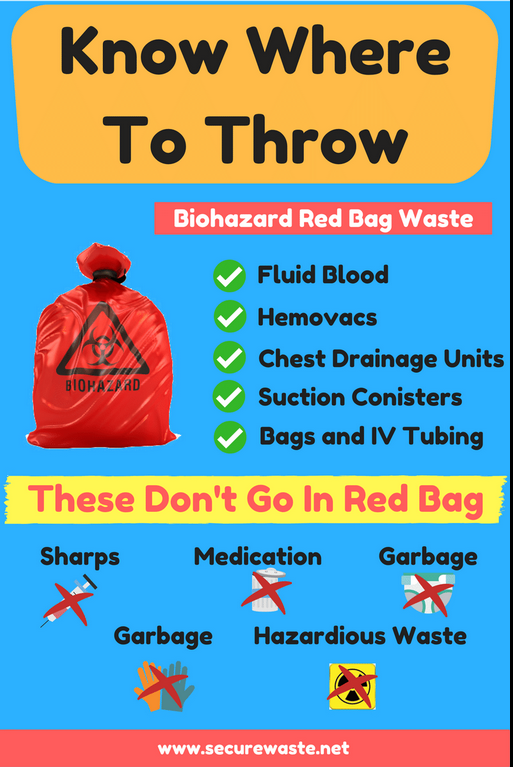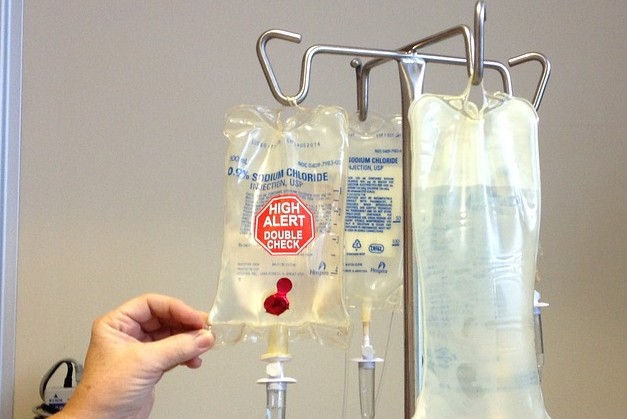Guardians of Tidiness: Resident Medical Waste Removal Service for Your Assurance
Stay Ahead of Rules: Expert Suggestions on Medical Waste Disposal
In a world where the healthcare sector is regularly advancing, it is vital for medical centers to remain ahead of laws when it pertains to the appropriate disposal of clinical waste. With stringent guidelines and frequent regulatory changes, it can be challenging to browse the intricacies of this procedure. Nonetheless, with skilled recommendations, centers can make certain conformity and mitigate threats connected with incorrect waste disposal. From understanding the various groups of medical waste to executing the right collection and segregation approaches, this conversation will certainly provide actionable tips and beneficial insights to help centers remain in advance of regulations in the ever-changing landscape of clinical garbage disposal.
Comprehending Medical Waste Categories
Comprehending medical waste groups is crucial for correct disposal and administration in healthcare centers. Medical waste describes any waste created by health care activities that may pose a threat to public health and wellness or the environment. It is vital to categorize clinical waste accurately to guarantee its safe handling, disposal, therapy, and transportation.
There are numerous categories of clinical waste that medical care facilities need to be knowledgeable about. One of the most usual classifications consist of transmittable waste, pathological waste, sharps waste, pharmaceutical waste, and chemical waste. Each group has particular guidelines and laws for its proper administration and disposal.
Pathological waste refers to human cells, body organs, or body components that call for special handling and disposal. Drug waste makes up ended, extra, or polluted medications that need cautious handling and disposal.
Staying Up-To-Date With Regulatory Modifications
Staying current with regulatory modifications is critical for medical care centers to make certain conformity and correct monitoring of medical waste disposal. medical waste removal. With regulations constantly advancing, it is crucial for healthcare centers to remain updated to avoid fines, penalties, and prospective harm to the environment and public wellness
To stay ahead of governing modifications, healthcare centers must develop a system for surveillance and tracking updates. This can be done by subscribing to regulative newsletters, going to conferences and workshops, and proactively taking part in market organizations. In addition, facilities should assign a personnel or team liable for remaining educated and sharing info to relevant stakeholders.
Routine interaction with regulative agencies is likewise crucial. Healthcare facilities should develop connections with neighborhood, state, and government agencies to ensure they recognize any kind of changes in guidelines that may affect their waste administration techniques. This can be done via normal meetings, participation in public comment periods, and aggressive interaction with governing firms.
Additionally, medical care centers ought to take into consideration partnering with waste monitoring firms that specialize in medical garbage disposal (medical waste disposal services with WasteX). These business are usually well-versed in the current guidelines and can offer advice and support to make sure compliance
Carrying Out Appropriate Collection and Partition Methods
To properly manage clinical garbage disposal, medical care facilities have to develop proper collection and partition approaches in conformity with regulative guidelines. Implementing these approaches makes sure the safe handling and disposal of potentially hazardous products, shields the environment, and reduces the threat of infections and injuries to healthcare workers and the public.
Proper collection and segregation methods involve making use of designated containers and labeling systems. Healthcare centers ought to give plainly identified containers for different sorts of medical waste, such as sharps, transmittable waste, pharmaceutical waste, and non-hazardous waste. These containers need to be color-coded and plainly significant to prevent confusion and advertise easy identification.
Additionally, health care facilities should train their staff on the right treatments for collecting and setting apart medical waste. This includes informing them on the various types of waste, the proper containers to make use of, and the relevance of complying with guidelines and regulations. Routine training sessions and refresher training courses must be conducted to my website make certain that team member stay up-to-date on best techniques.
In addition, health care facilities ought to develop a system for routine collection and disposal of clinical waste. This may entail partnering with certified waste monitoring companies that concentrate on medical garbage disposal. These business will certainly make sure that the collected waste is transferred and gotten rid of in conformity with regulative needs.
Selecting the Right Disposal Approaches

Incineration is one of the most efficient and typical techniques for dealing with specific kinds of clinical waste, such as pathological waste and sharps. It involves the controlled combustion of waste at high temperatures, decreasing it to ash. Incineration can release damaging toxins right into the air and add to air contamination.

Various other disposal methods consist of chemical treatment, microwave treatment, and landfilling. Chemical treatment involves the usage of chemicals to neutralize the waste and sanitize. Microwave therapy utilizes microwave energy to warm and decontaminate the waste. Landfilling entails hiding the waste in a marked landfill location (medical waste disposal services with WasteX). Landfilling needs to be the last resort due to the prospective threat of contamination to dirt and groundwater.
Guaranteeing Conformity Via Documents and Training
After meticulously taking into consideration the ideal disposal approaches for clinical waste, medical care centers need to make sure compliance with regulations and decrease ecological influence by implementing reliable documents and training treatments. This step is vital in maintaining a sustainable and secure setting for both medical care employees and the general public.
Healthcare workers who handle medical waste needs to receive suitable training on waste segregation, managing, and disposal treatments. By supplying thorough training, medical care centers can encourage their team to make informed choices and minimize the risk of incorrect waste disposal.
Final Thought
To conclude, remaining ahead of policies in medical waste disposal is important for medical care centers. medical waste removal. Understanding the different groups of clinical waste, remaining updated with regulative modifications, carrying out appropriate collection and segregation methods, choosing the suitable disposal techniques, and guaranteeing compliance via documents and training are all necessary steps. By following these guidelines, healthcare companies can properly get rid of and handle of medical waste in a secure and liable fashion
From recognizing the different groups of clinical waste to implementing the best collection and segregation techniques, this discussion will certainly supply valuable understandings and actionable pointers to help centers stay in advance of regulations in the ever-changing landscape of clinical waste disposal. - medical waste disposal services with WasteX
The most typical groups include contagious waste, pathological waste, sharps waste, pharmaceutical waste, and chemical waste. Health care centers should supply plainly classified containers for different types of medical waste, such as sharps, contagious waste, pharmaceutical waste, and non-hazardous waste. Medical care centers must develop a comprehensive system to tape-record and track all elements of medical waste disposal, consisting of kinds of waste generated, amounts, and disposal methods used. Healthcare workers who deal with medical waste should receive suitable training on waste segregation, managing, and disposal treatments.